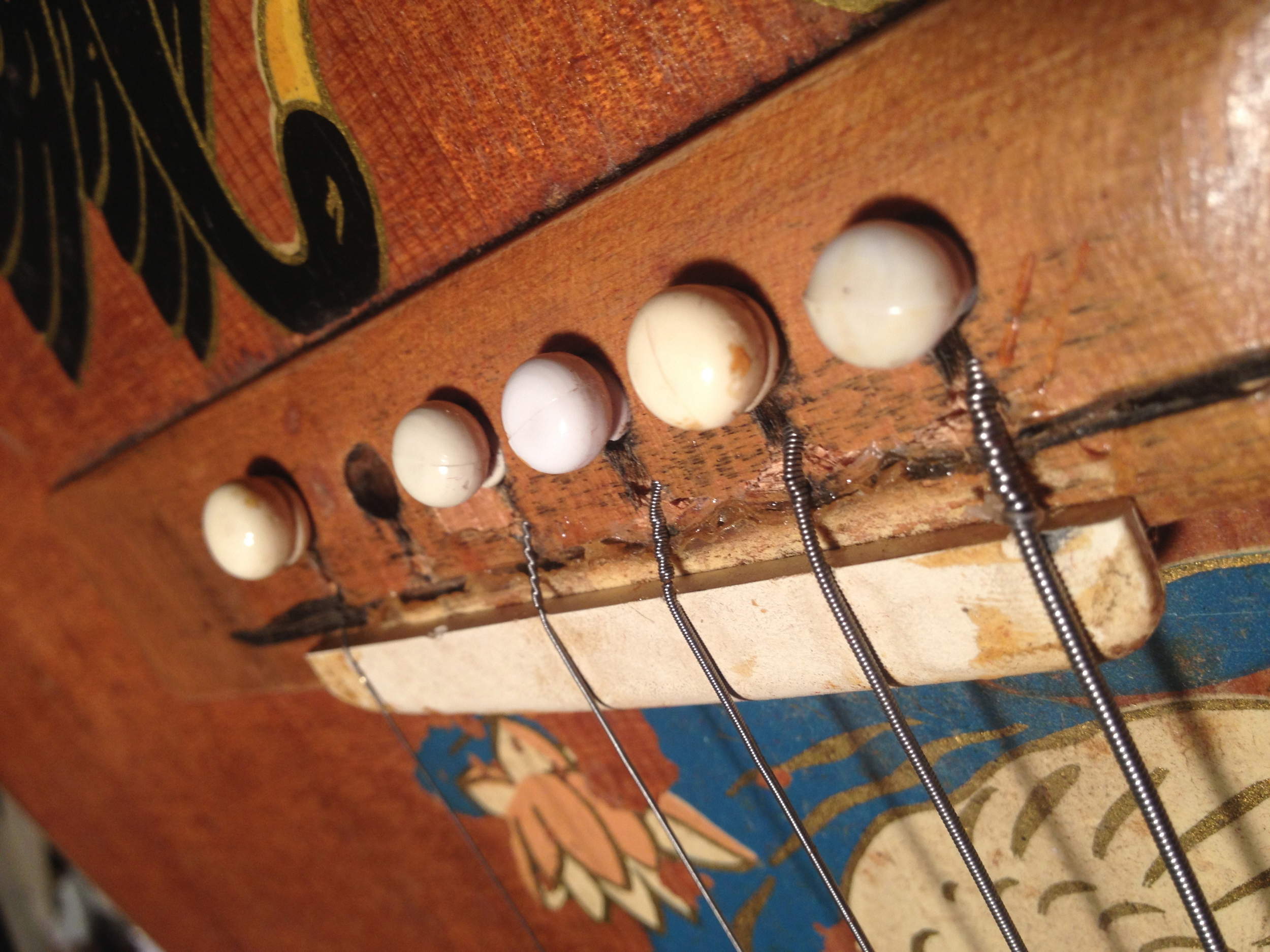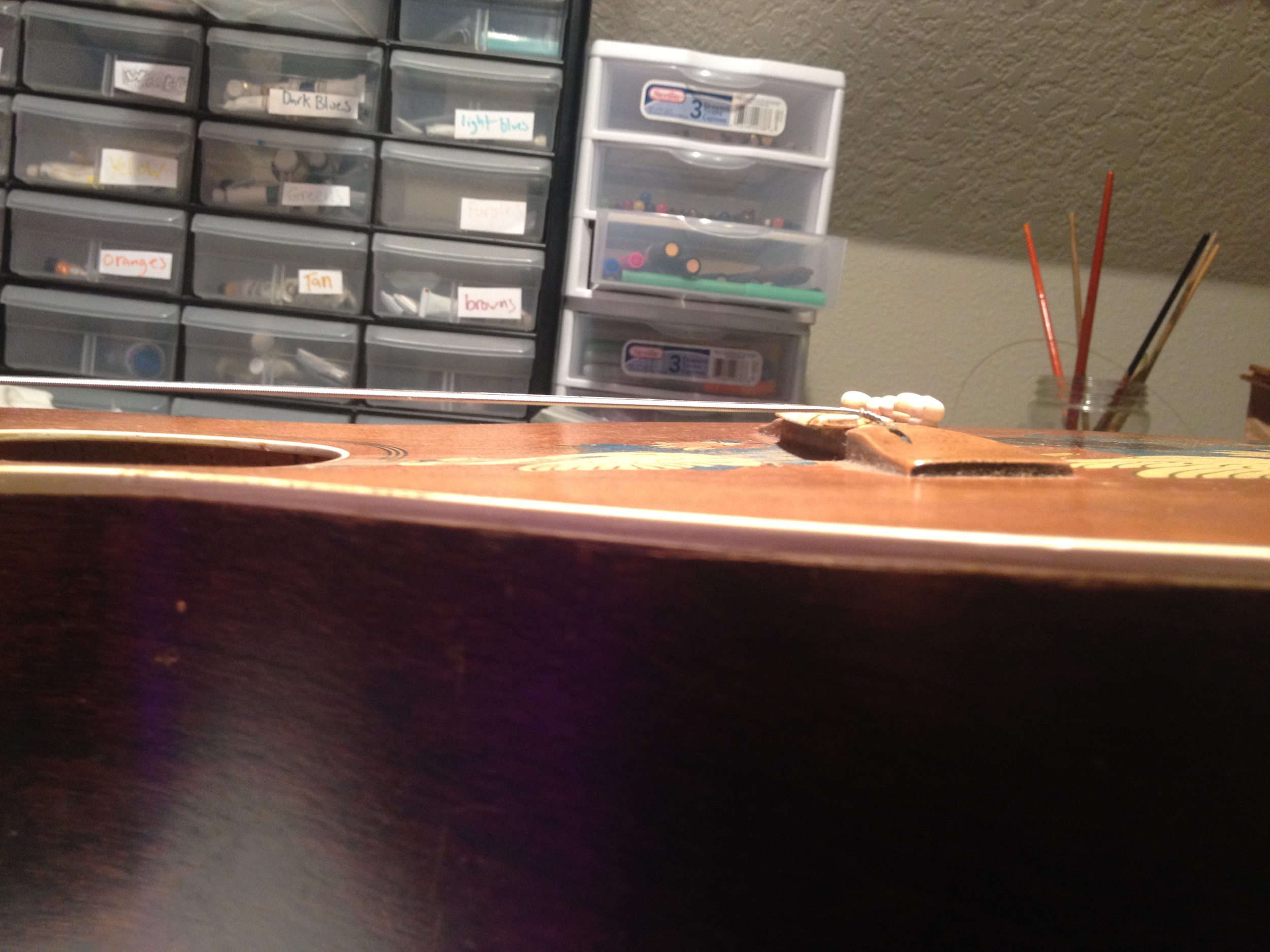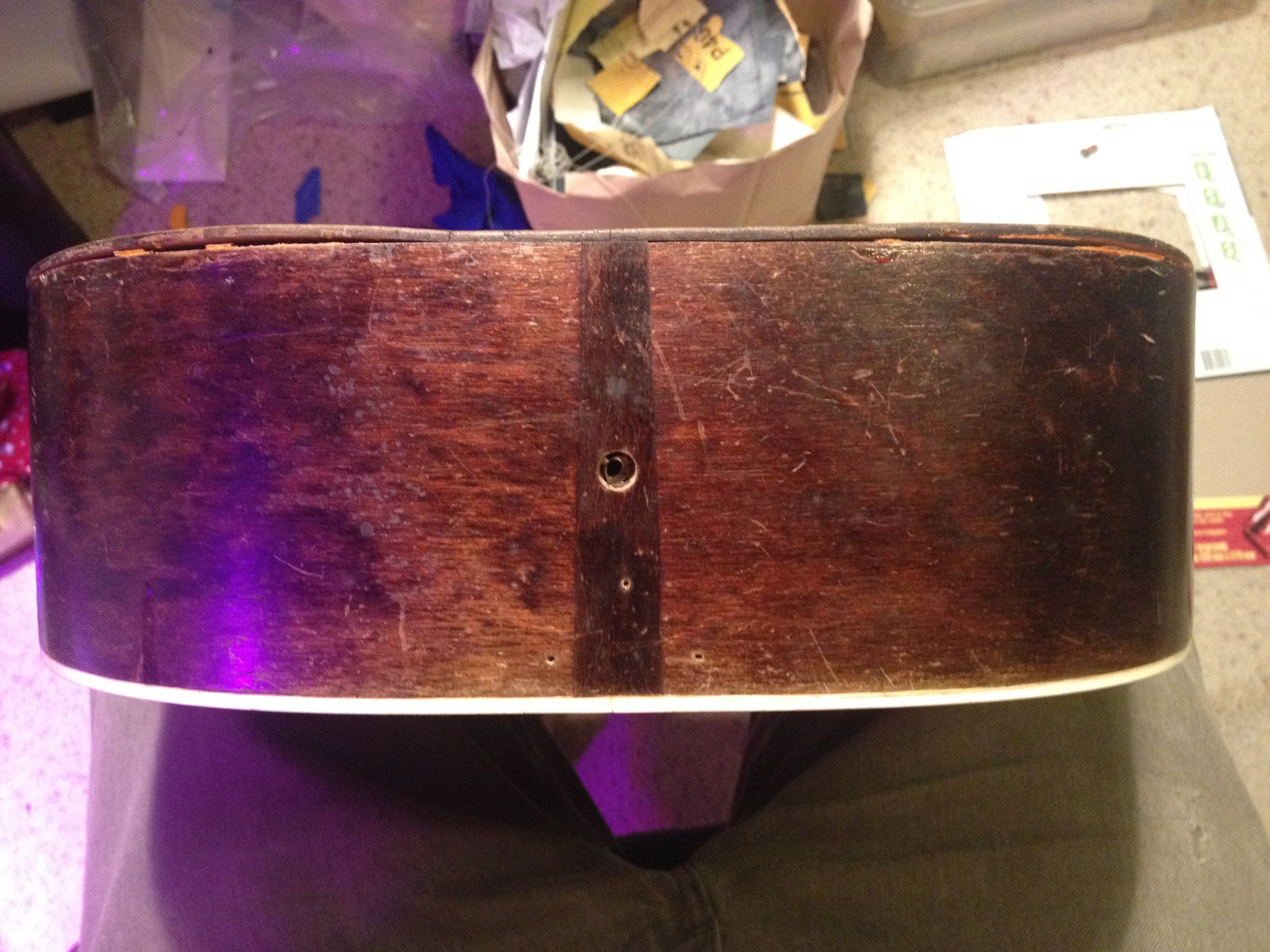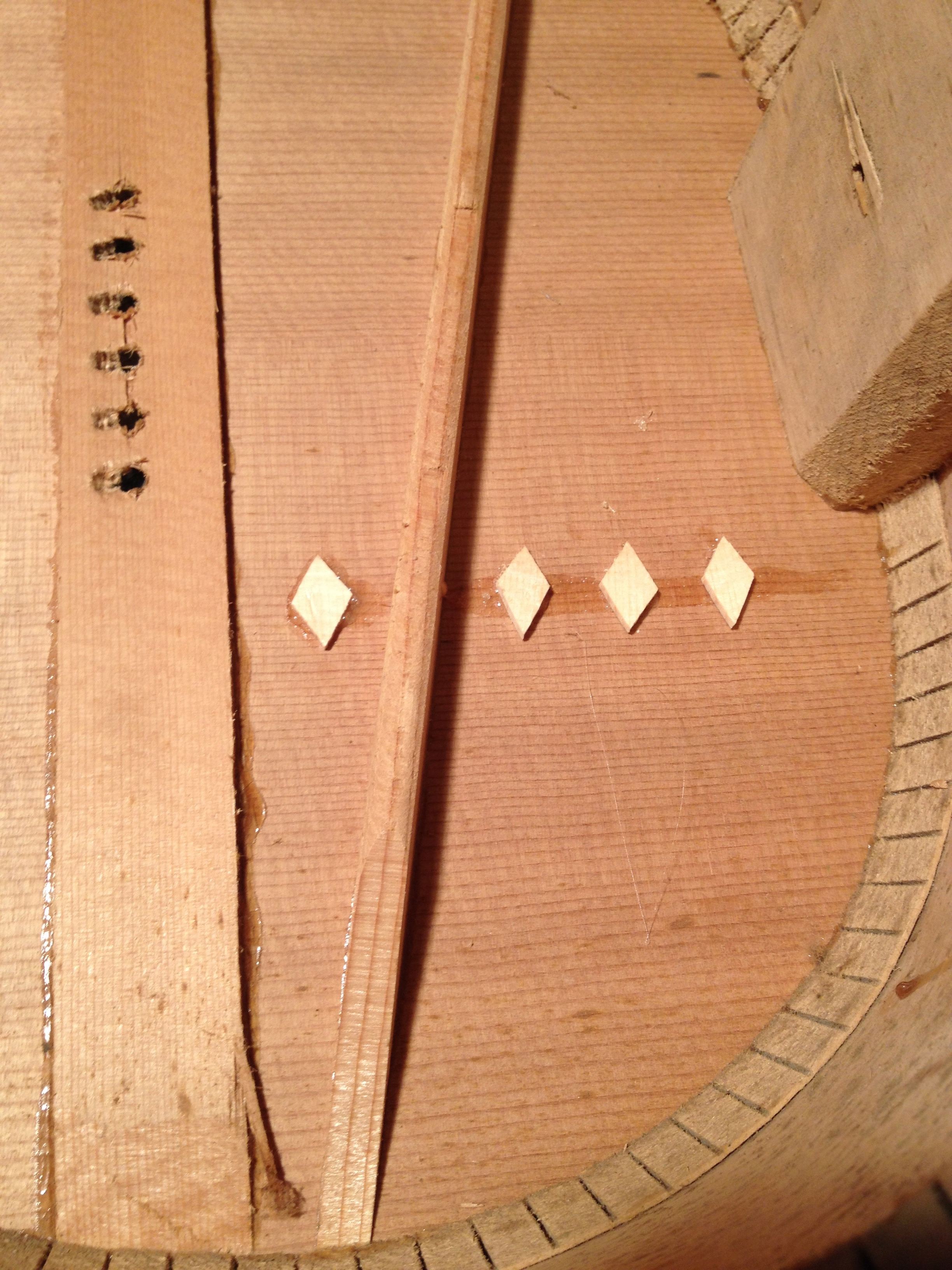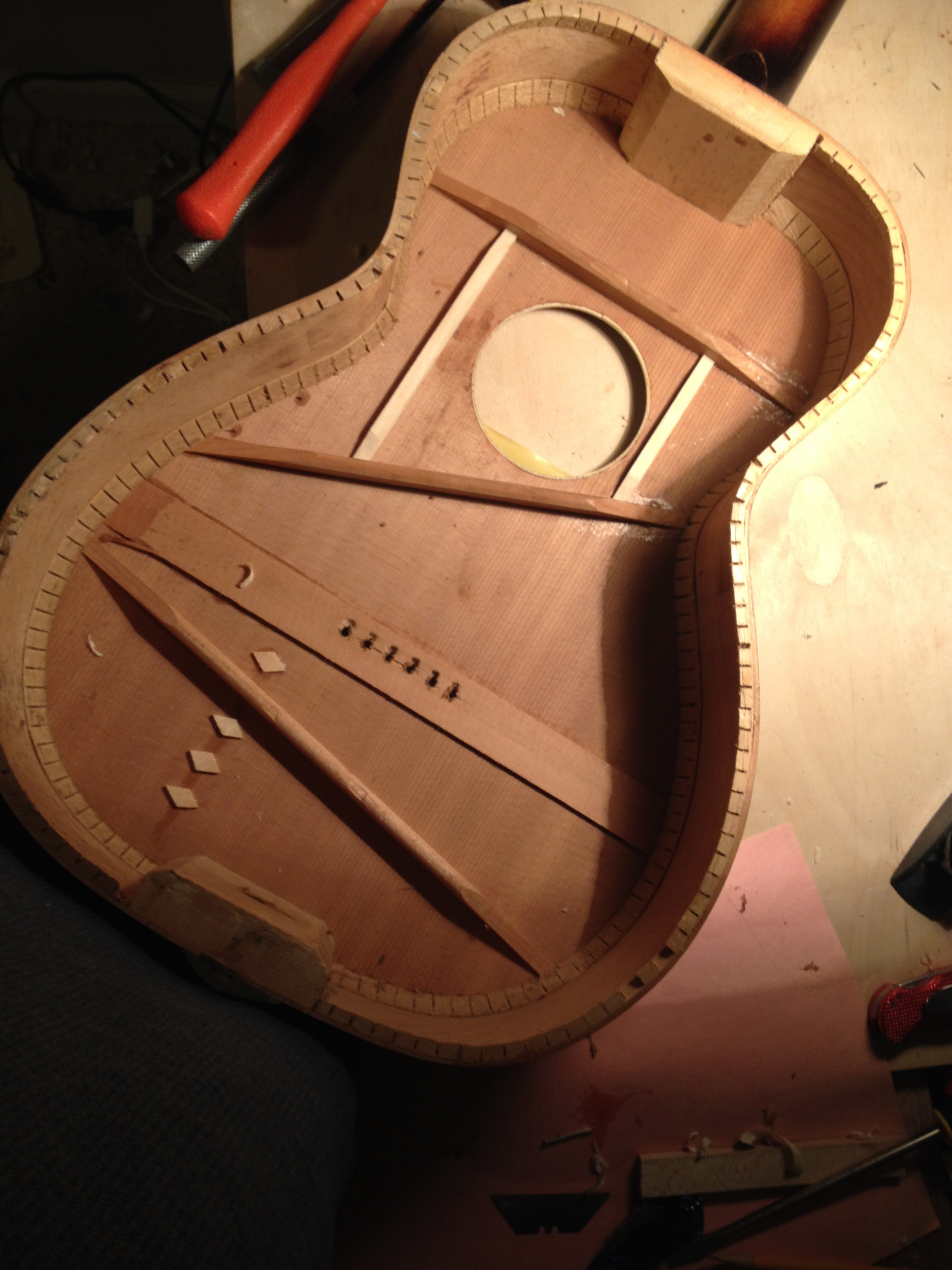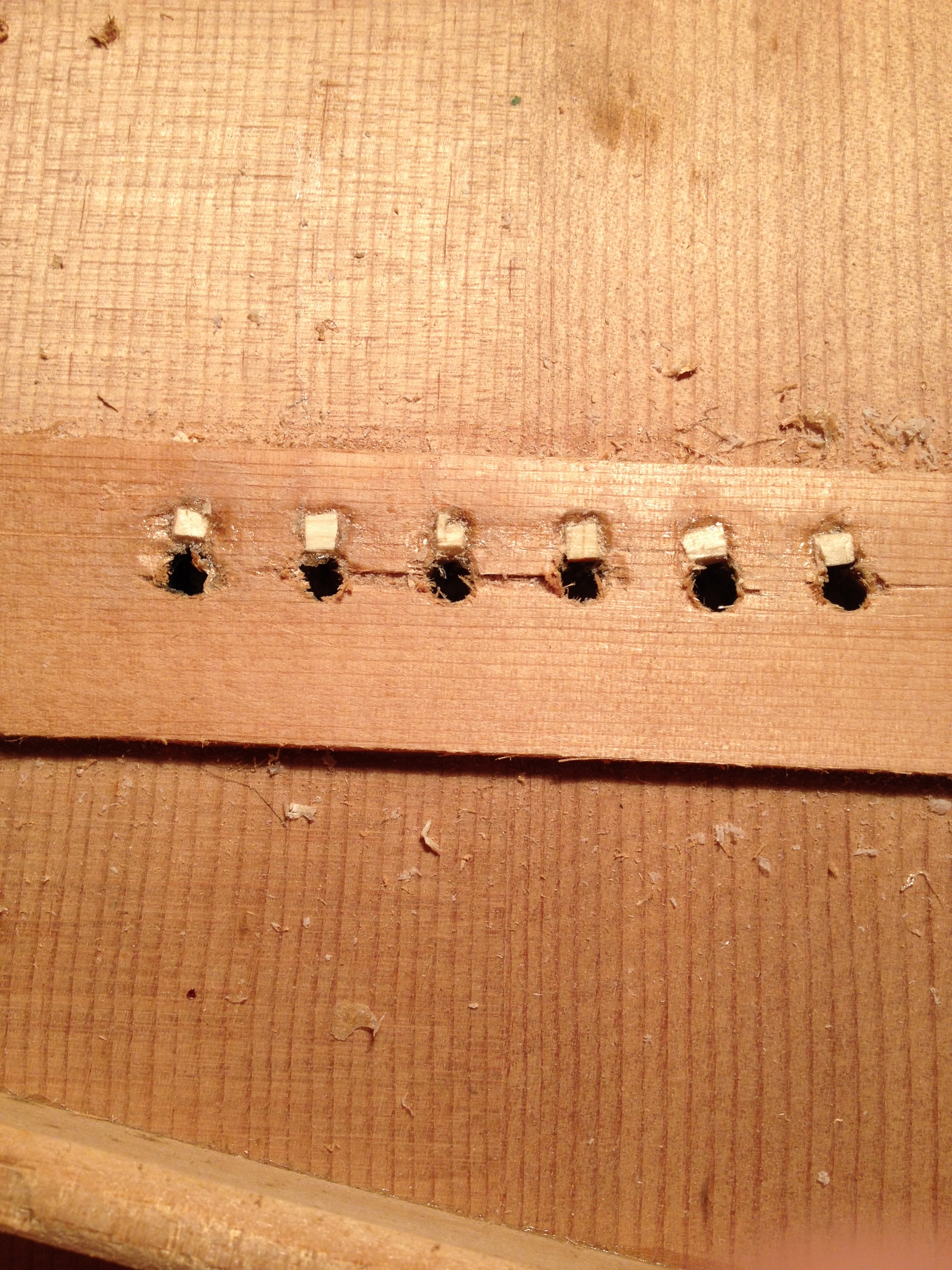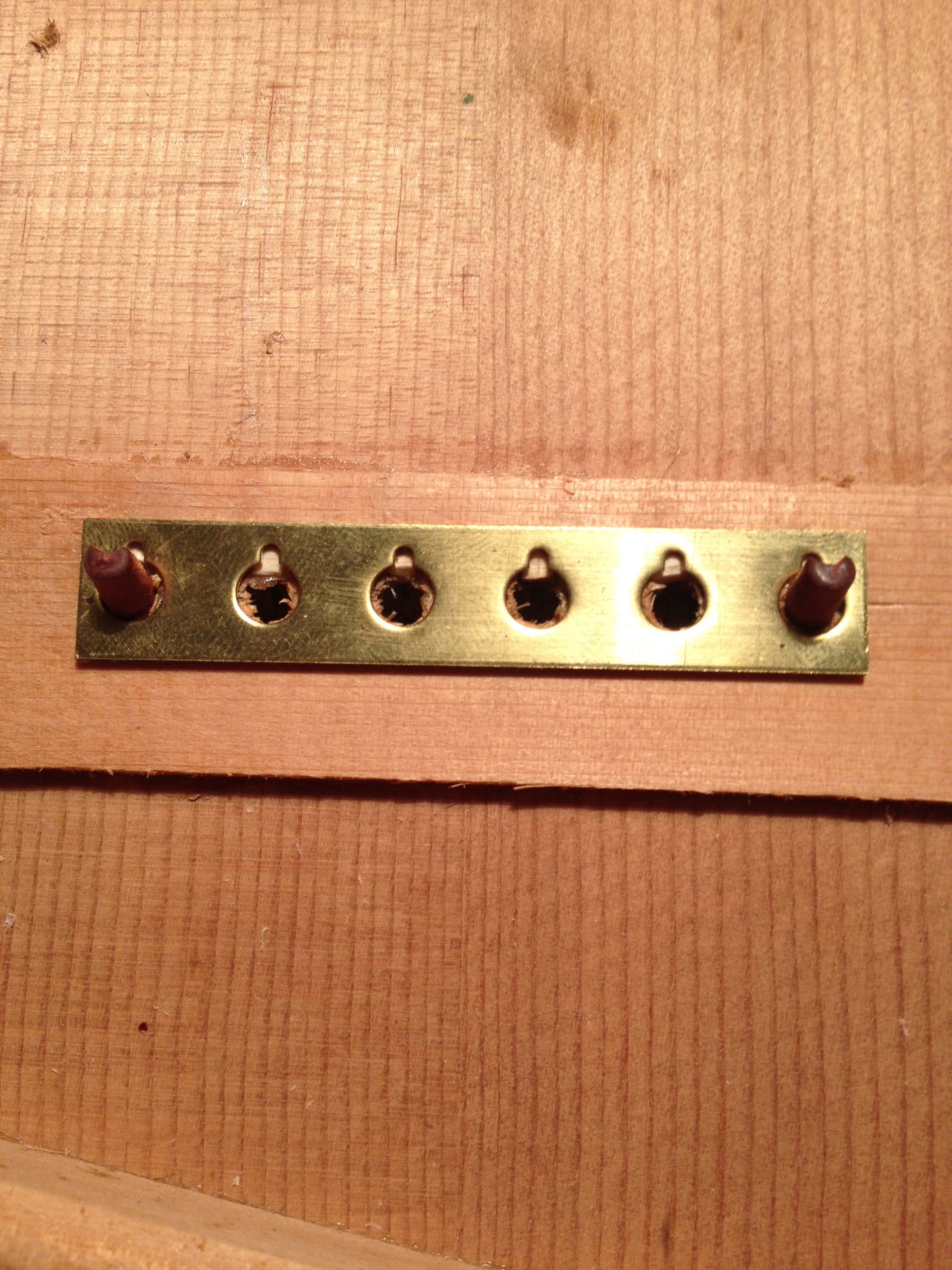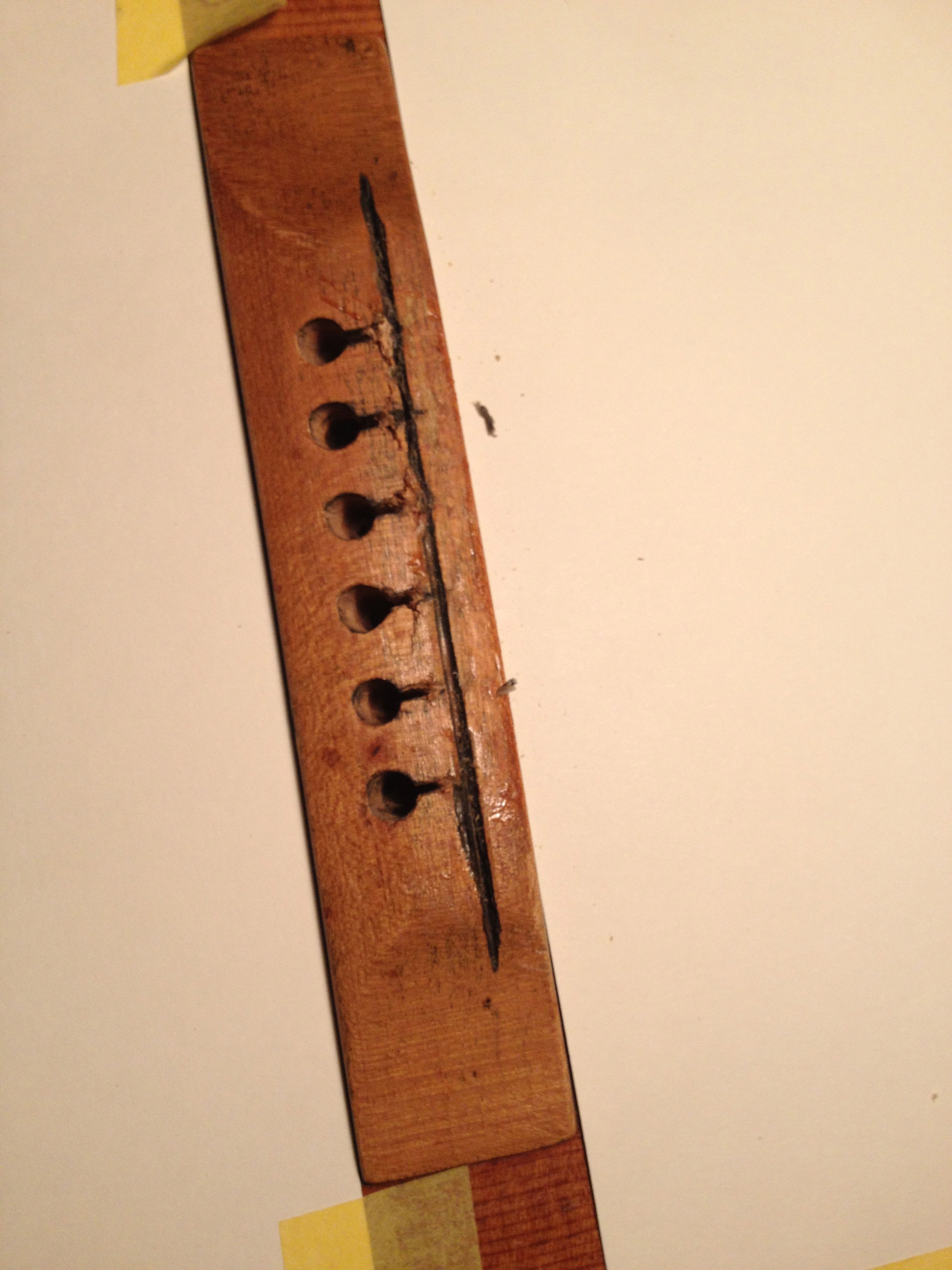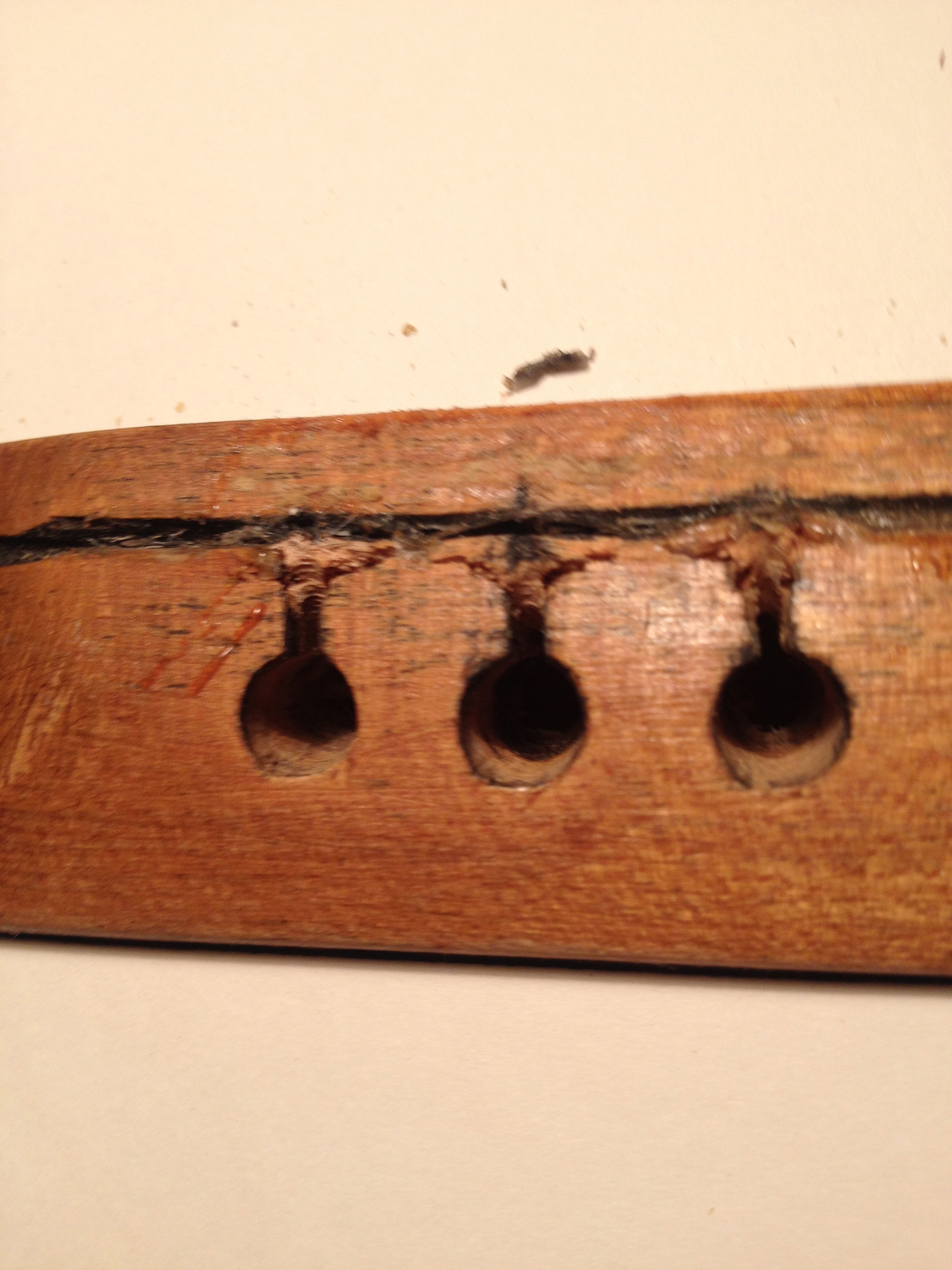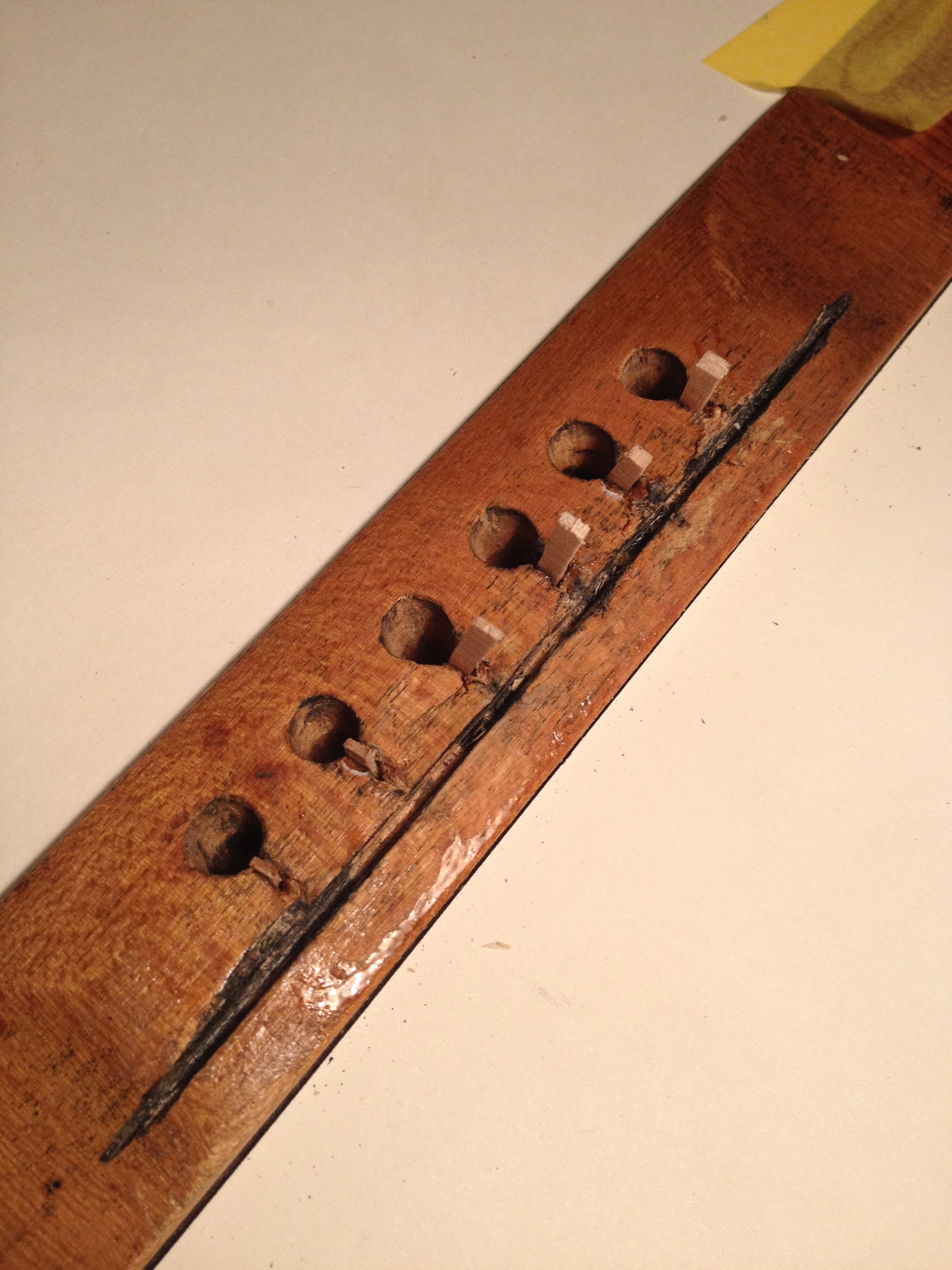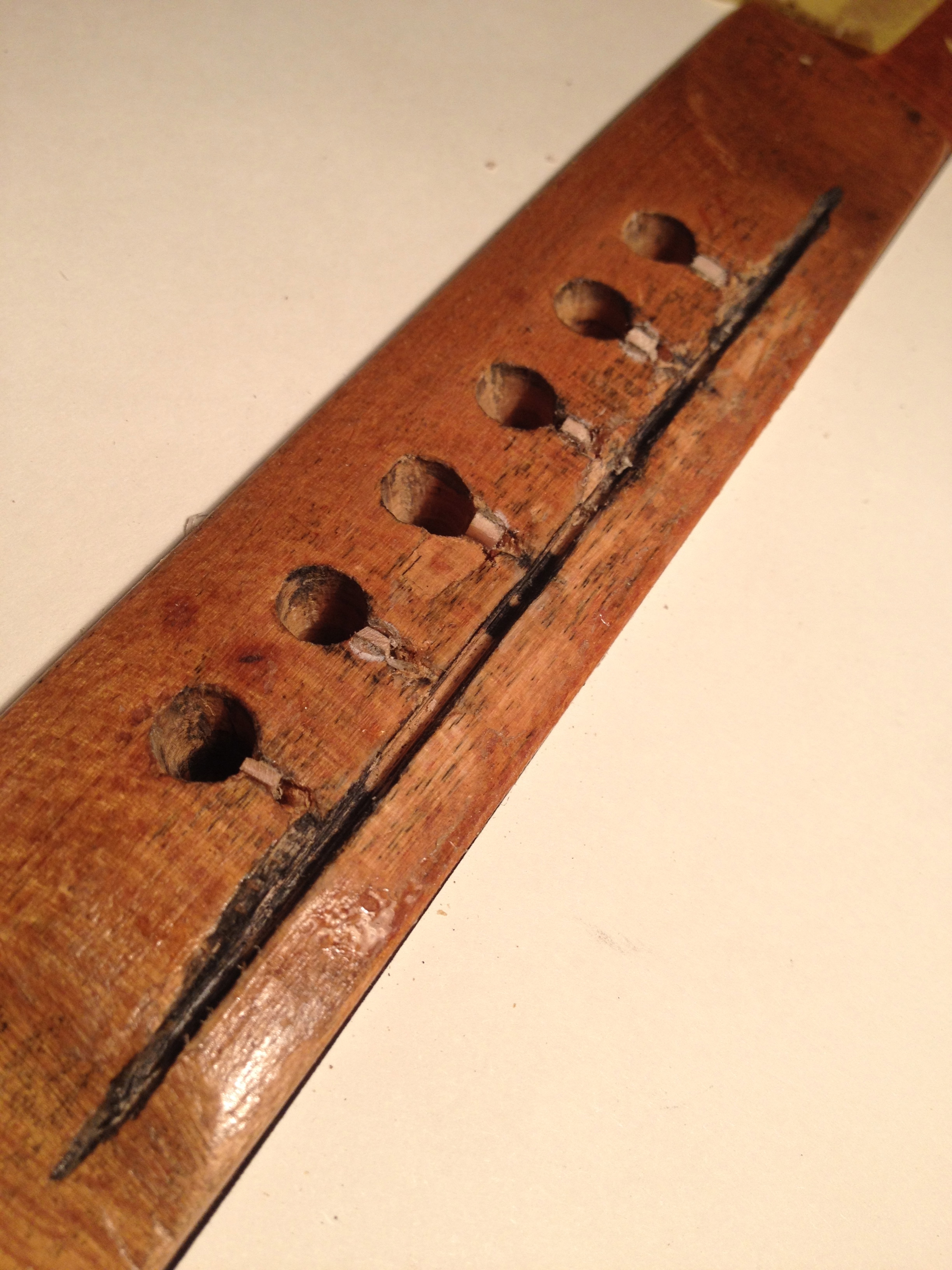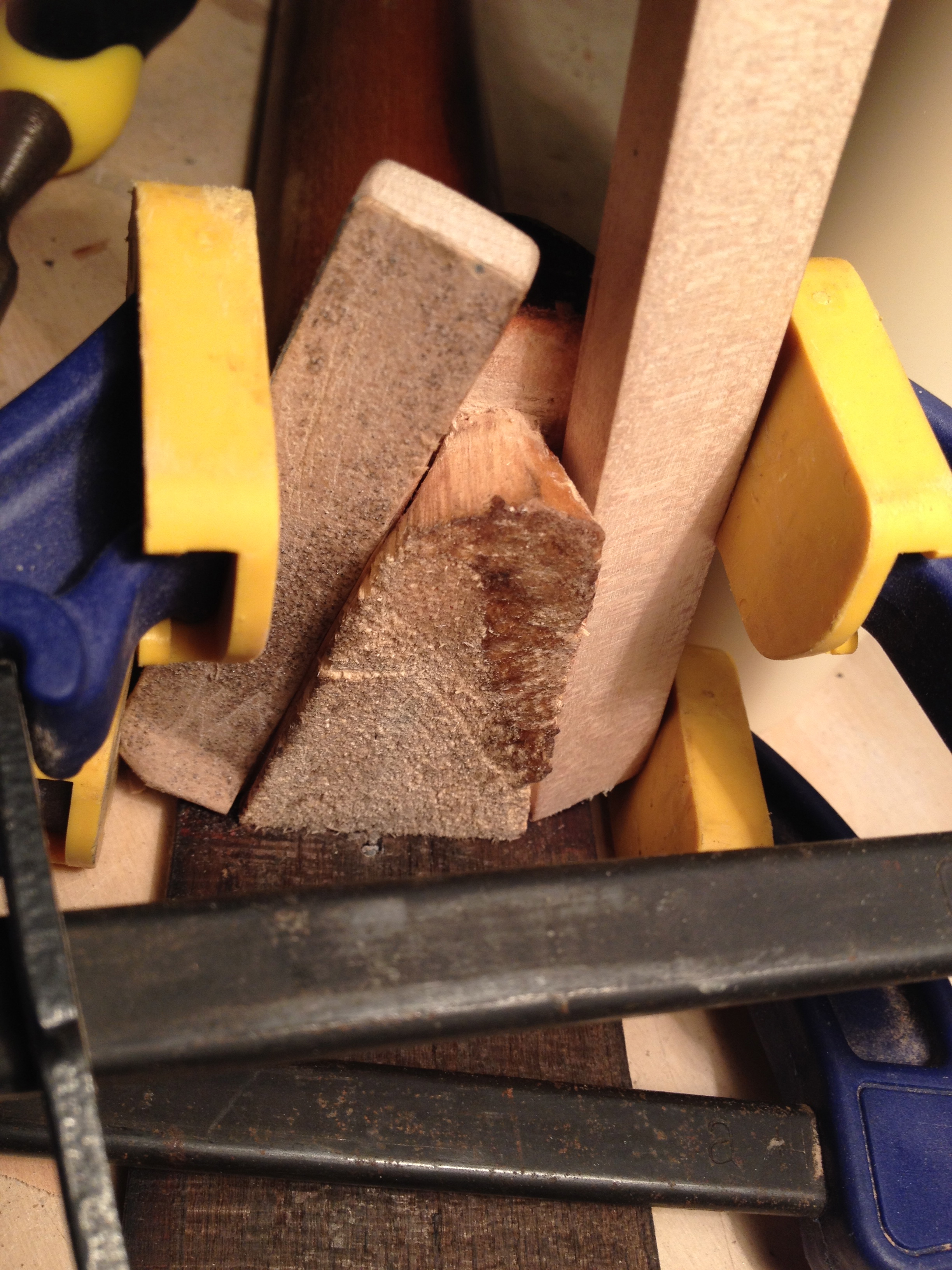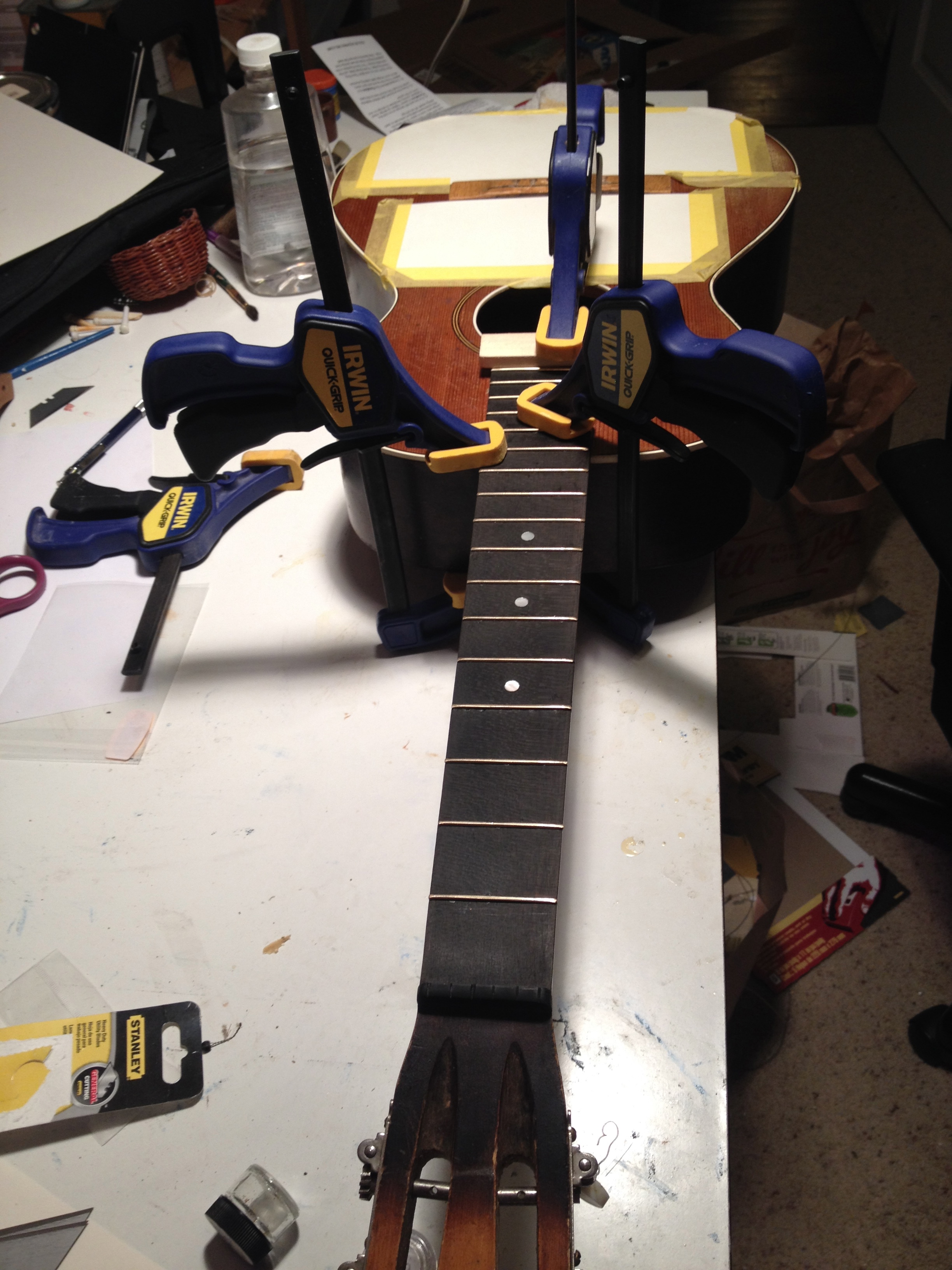I'm always looking for projects that will challenge me and force me to learn new skills and hone old ones. Restoring old instruments teaches you a lot about building new ones. So when I saw an ad on craigslist for this old Maybell guitar I jumped at it.
The ad was posted by the owners of Tinkertopia in Tacoma Washington. The call themselves a "Creative Reuse Center" much like SCRAP here in Portland. http://tinkertopia.com/
When I drove up to Tacoma to take a look at the guitar I was really taken with the store, it was full of all sorts of interesting and inspiring materials for all sorts of art making. But when I saw the little wreck of a May Bell guitar with its unique swan decals I knew I had to get it and get it up and running again.
It had significant problems. The maple bridge had been pretty badly chewed up and the strings had cut in almost to the saddle slot which at some time had been filled with a mysterious glue. the top was badly warped and the back had lost all of its braces and had begun to ripple itself off the guitar.
I was able to remove the back pretty easily with a pallet knife and get a closer look at the problems. The three main braces on the top had all come loose in places and needed re-gluing. I also need to guesstimate the radius of the back. I could tell it originally had a curved profile but with none of the original braces I had no reference other than what was left of the curve in the back itself.
So I carved 4 new braces and used my belt to protect the old finish of the back as I go-barred the braces in place.
After shaping the braces the back started to ring impressively for and old piece of flat sawn birch, and so I started to focus on fixing the problems with the top.
I cleated a crack, re-glued the popped braces and added two small braces on either side of the soundhole to help fix some of the distortion in the top and to further stabilize what is an arguably under-built guitar. The bridge plate is a of spruce instead of maple or some such similar hardwood, and as a result it had almost worn through where the ball-ends of the strings sit. So I inlayed some new little pieces of spruce and put a brass plate-mate over the pin holes.
I removed all of the old glue from the bridge and began a similar operation to what i had done to the bridge plate but this time with pieces of maple
Then things stared to get tricky. After I glued the back on it was time to reset the neck and re-fret the guitar. The fingerboards on these old Chicago guitars are often made of some ebonized wood that turns out to be exceptionally brittle. I removed the 13th fret to make a small hole for the neck steaming needle and saw the real job ahead of me was going to be taking out the fret without totally destroying the fretboard.
I steamed the neck off and did my second ever re-set. While the angle was vastly improved and the the new joint stable, this didn't prove to be my most aesthetically prefect repair with a few little cracks and gaps, but i didn't want to anguish too much over what was never a fine instrument.
After a torturous re-fret I made a new nut and saddle, strung the thing up, and was amazed at what a great little guitar it turned out to be. Here is a little sample of it in action



